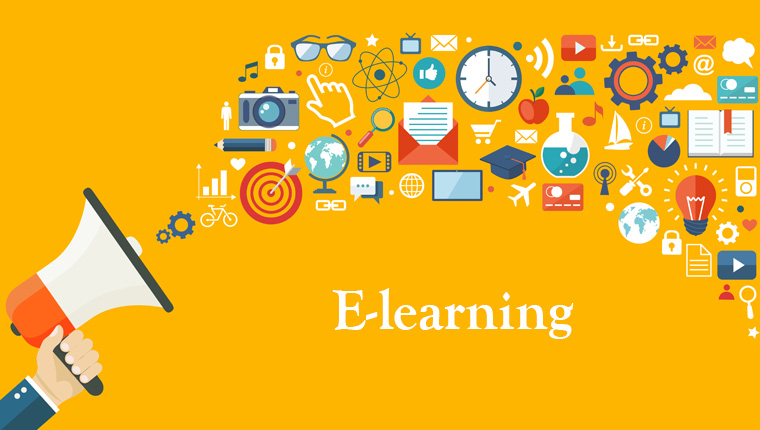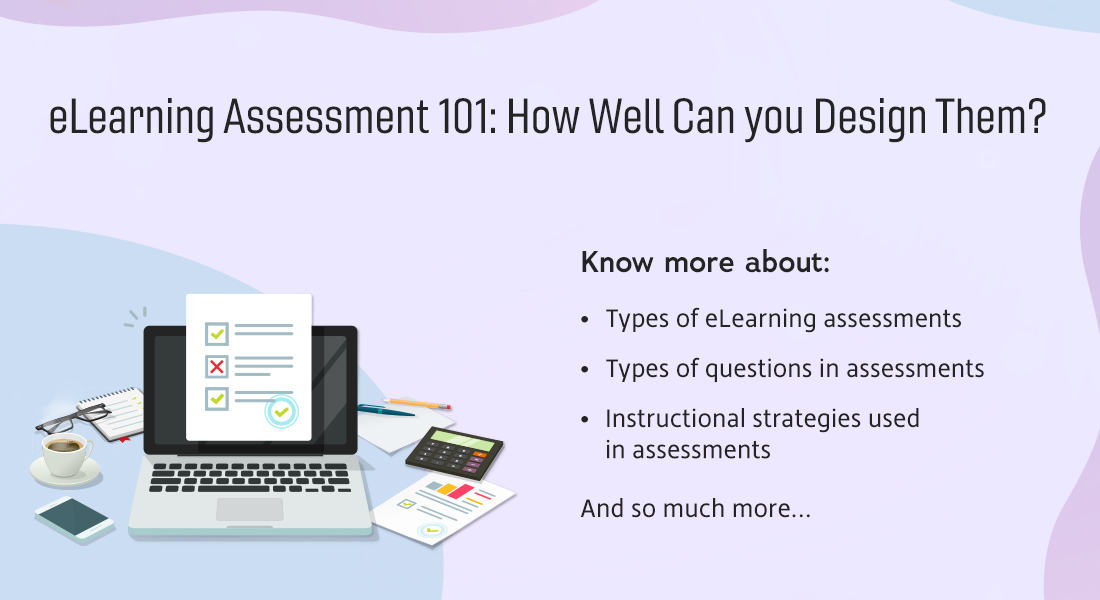How to Use E-learning for Far Transfer of Learning?

If there’s one challenge that continues to baffle training managers and L&D professionals alike, it is the transfer of learning. You might be spending millions on organizational training, but it’s all going to be a waste if employees are unable to apply this on their job. It is said that there are 14 ways in which learners can transfer what they know into practical application, among which near and far transfer of learning are prominent. While eLearning has proven itself in near transfer training programs, can it help in far transfer of learning?
Leveraging E-learning for Far Transfer of Learning
- Present varied context-worked examples
- Make use of collaborative learning
- Provide opportunities for practice
- Incorporate reflection activities
- Include assessments to test higher order thinking skills
Before we find out, let’s understand what far transfer of learning is.
What is Far Transfer of Learning?
Far transfer of learning involves training on principles or guidelines. These are tasks that change each time, depending on the circumstances. Employees might have to apply the principles that were taught during training to different situations at the workplace.
- Far transfer of learning is more challenging to execute. If training has to be effective, it needs to be designed in such a way that learners are able to adapt and apply the learning, even when circumstances change.
- Training programs on product design, customer service, or sales techniques are examples of far transfer training.
Why Isn’t it Easy to Apply E-learning in Far Transfer of Learning?
Near transfer training involves imparting training on procedures. This involves specific steps to be followed the same way every time. For instance, if you‘re training employees on a software that’s used to log timesheets, you can use eLearning simulations to get employees familiar with the steps to fill their timesheets and even practice in a simulated environment. The steps to fill in a timesheet are the same in the simulation as well as in the actual software, making it near transfer of learning.
In case of far transfer of learning, employees cannot use what was taught in the training directly on the job. For example, an online sales training on closing a sales call can teach employees the principle behind a sales call and the different ways to close the call, but which one an employee chooses to use is left to his/her discretion depending entirely on the situation they are presented with at a certain point of time.
In this case, the learning cannot be directly transferred to the workplace. And that’s why designing eLearning for far transfer of learning requires more time to be spent on analysis, design, and development. Though it’s much easier to design eLearning for near transfer, it can be applied in far transfer of learning as well.
How to Use E-learning to Design Far Transfer of Learning?
Here are a couple of ideas to use in eLearning courses for far transfer of learning.
1. Present Varied Context-Worked Examples
The challenge in using eLearning for far transfer of learning is that the course needs to enable employees to apply the learning to new problems in the work environment. You could make use of worked examples in varied contexts. A worked example is a step-by-step explanation on solving a problem or performing a task. Varied context-worked examples are usually used to teach a principle and use different problem statements but the solution or principle used to solve the problem remains the same.
There’s a classic experiment that was conducted to prove the benefits of varied context-worked examples (Gick & Holyoak, 1980). Learners had to imagine themselves as doctors and solve a tumor problem. Operating the tumor was not a solution, but it had to be removed as it was life-threatening. There was a ray that doctors could use to remove the tumor, but it had to be used at a particular intensity. But the problem was that, at that intensity the ray was harmful to healthy tissue as well. At a lower intensity, the ray neither did any harmful effects, neither was it capable of destroying the tumor. How can a doctor use this ray to remove the tumor?
Different groups of learners went through different examples. One group read a story about a general who captured a fortress by splitting his troop and getting them to attack the fortress from all sides. Another group read a story about putting out a fire in an oil rig. A single hose could not put the fire out and the problem was solved by using multiple hoses to spray water from all sides. Now, the common thread that runs across all these stories is the convergence principle, only the context in which it is used vary.
It was found that learners who tried to solve the tumor problem without reading the other two examples were unable to arrive at the convergence principle as a solution as compared to those who went through the examples. So, it’s evident that learners are able to apply a principle or procedure when they learn about it in different contexts. When you design eLearning for far transfer of learning, it would be a good idea to use worked examples where the underlying principle is the same but the context varies.
2. Make Use of Collaborative E-learning
Collaborative eLearning provides opportunities for interactions with peers, instructors, and subject matter experts. When you get to hear different views to solve a problem or complete a task depending on the situation, it enables far transfer of learning. Here’s how you can make use of collaborative learning tools.
Consider the example discussed in the previous point. The discussion forum on your LMS can be used to host an online discussion where learners are required to visualize other contexts in which the convergence principle can be used. Collaborative eLearning works well for far transfer of learning because it helps learners:
- Understand different perspectives
- Make complex decisions
- Have access to one-on-one coaching
3. Provide Opportunities for Practice
E-learning for far transfer of learning generally requires learners to think critically or make decisions. How do you facilitate this in an eLearning course? Scenario-based learning is a good strategy to use. Consider the example of an online training on ethics policies. Employees need to know what constitutes an ethics violation and the course of action to follow in case of a violation of ethics.
To help employees develop their critical thinking skills and make decisions, scenarios depicting a variety of situations and contexts can be presented to the learner. Learners are able to recognize a pattern, form inferences, and act appropriately when faced with a situation that violates work ethics policies. Or take the case of sales training. Learners are required to use their discretion and knowledge and apply it in varying situations. Each sales call may not be alike.
4. Incorporate Reflection Activities
During the eLearning course, include reflection activities that help learners analyze what they have learned. This can help in far transfer of learning. For example, if you have included a case study in your eLearning course, ask learners to reflect on the content covered in the case study and construct new knowledge that can be applied to their tasks at the workplace.
Let’s look at an example of an online training for customer service agents. Include scenarios depicting customer service agents talking to a customer. Before you reveal what is the right or wrong technique to handle a customer, have learners reflect on the scenario. Have them do the following:
- Capture their thoughts on the situation
- Identify what went well and what did not
- Reflect on what they would have done if faced with a similar situation
5. Include Assessments that Test Higher Order Thinking Skills
Assessments in eLearning courses are aligned with the learning objectives which in turn are based on Bloom’s Taxonomy. When you use eLearning for far transfer of learning, your course content would usually involve assessing learners for higher order thinking skills, which means your assessment questions would have to map to levels 4, 5, or 6 in the Bloom’s taxonomy.
Include assessments where learners are required to analyze (level 4), evaluate (level 5), or create (level 6). For example, when you are training employees on product design, you could include an assessment where they are required to design a new product based on their understanding of design. That would be Level 6 in the Bloom’s taxonomy where you’re testing learners on their ability to create something new based on their existing knowledge.
But coming to the crucial question of “Is eLearning alone sufficient for far transfer of eLearning?” I would say no as it makes more sense to use a blended learning strategy. Far transfer of learning requires a lot of discussions, analyses, critical thinking, and an instructor might be required to guide learners in these tasks. So, you could consider including a combination of eLearning or other forms of digital training and instructor-led training to achieve successful far transfer of learning. Also, keep in mind that each employee differs in his/her ability to solve problems and apply the training. So, results may not be uniform even after training is provided.
The next time you’ve to design a training, check if the task is near or far transfer and choose your training methodology accordingly. And if you would like to use blended learning to boost employee performance, our eBook on this topic could prove to be a useful resource.





![Creating Effective eLearning Assessments Leveraging Various Formats [Infographic]](https://blog.commlabindia.com/hubfs/Imported_Blog_Media/Creating-Effective-eLearning-Assessments-Leveraging-Various-Formats-Infographic.jpg)